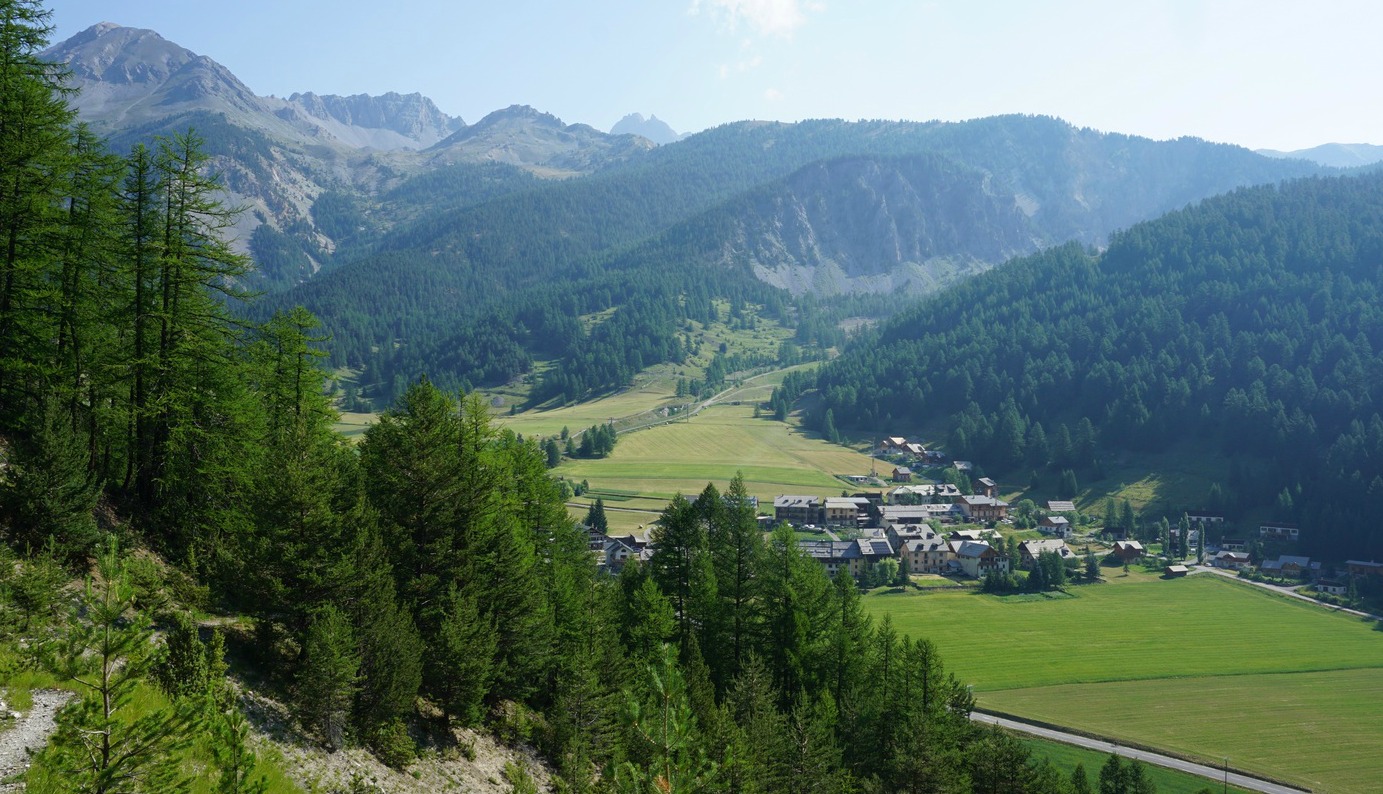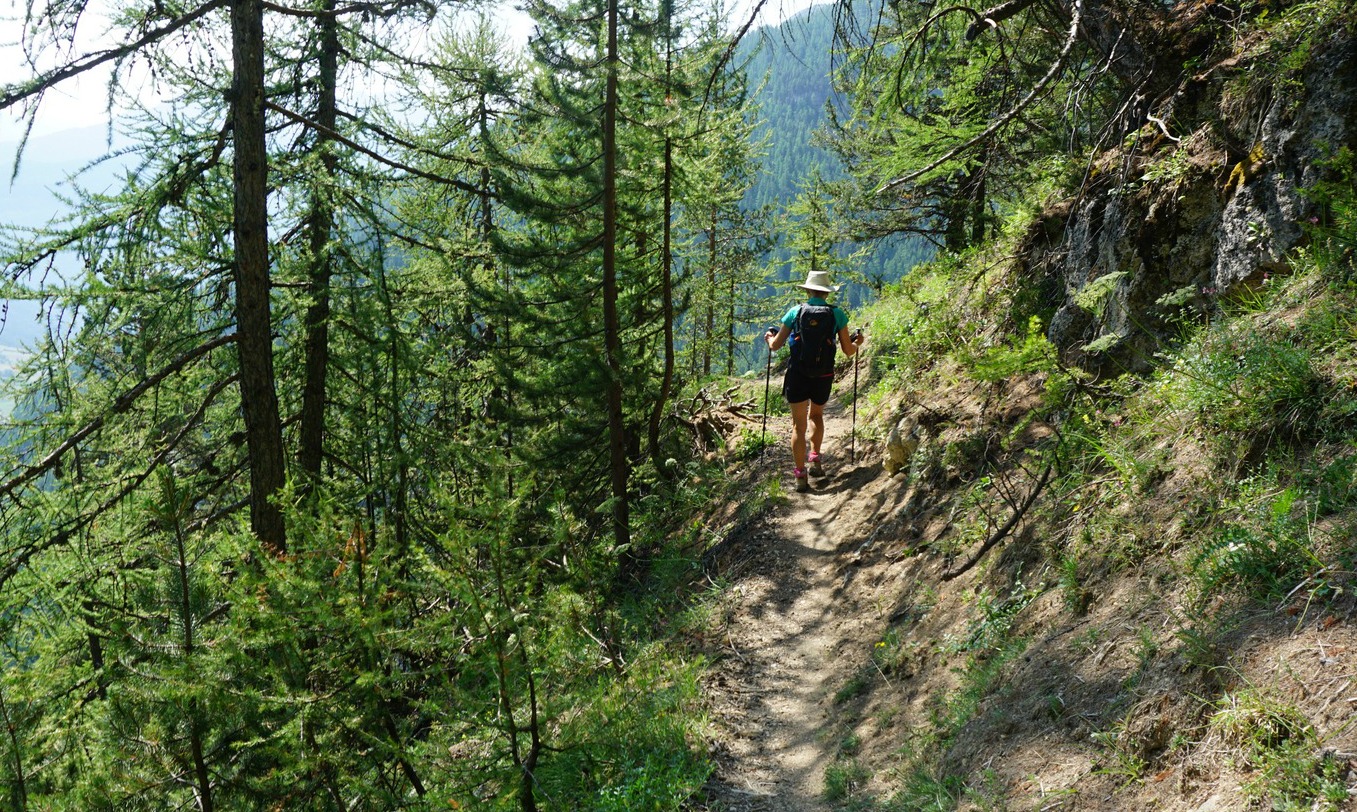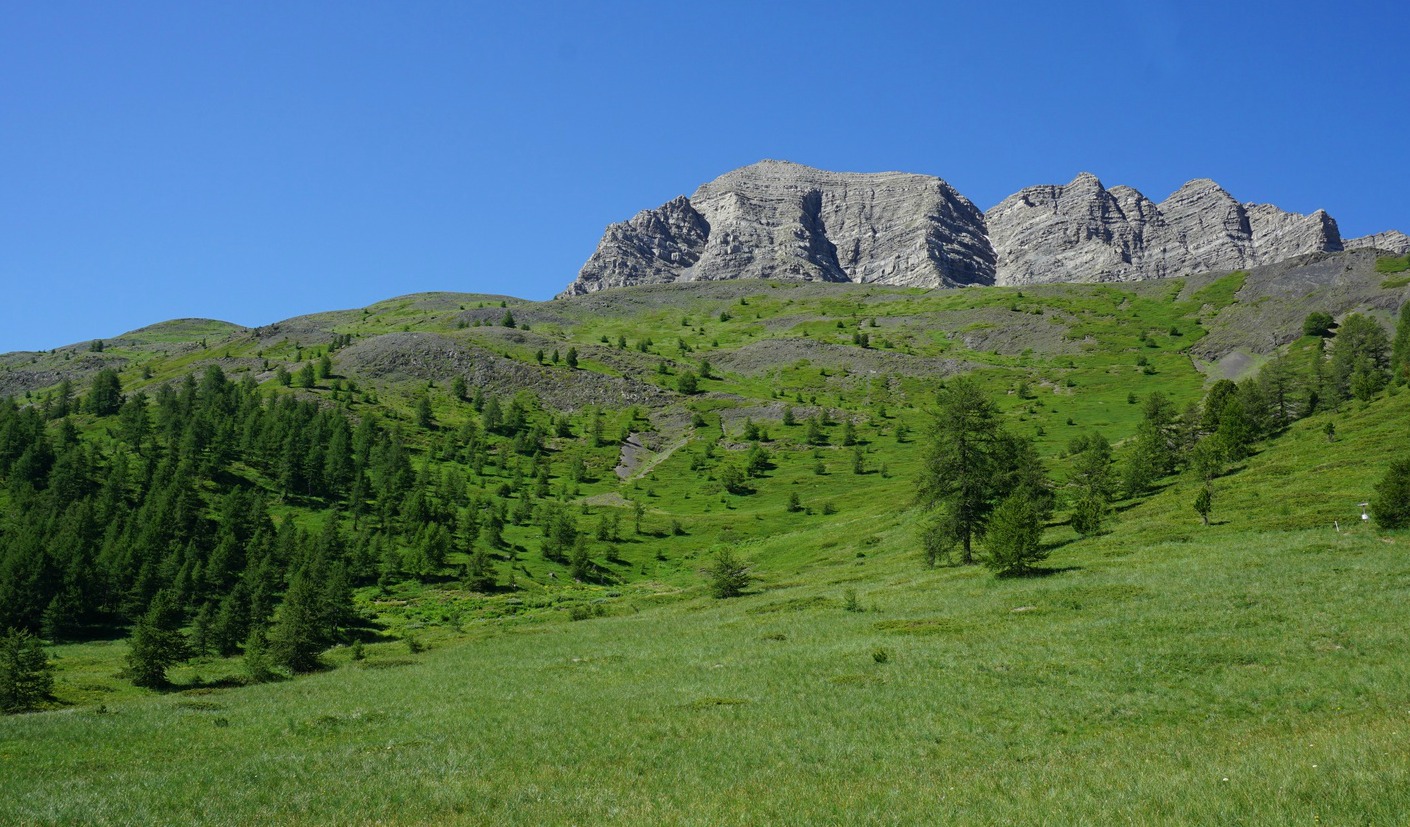

The following carefree recipe is full of flavours from the South of France. Red mullet is the Mediterranean choice of small fish fillets for this dish but other small fish fillets could also be used.
Tapenade, black olive paste, is an essential ingredient in the recipe. If you don’t have tapenade in your area, it is easy to make. In a food processor, combine a handful of best-quality pitted black olives, 1 tbsp. capers and 1 tbsp. olive oil. Process into a paste. Add more olive oil if the paste seems dry. The paste does not need to be wholly smooth.
2 servings
About 250 g red mullet fillets
A small jar of tapenade
1 fennel
2- 3 tbsp. olive oil
Two handfuls of baby spinach leaves
A handful of cherry tomatoes
1 garlic clove, minced
Fresh basil leaves
Wash and slice the fennel. Place in a microwave dish with a splash of water and microwave until soft.
Preheat the oven to 200° C.
From baking paper, cut two large pieces, about 40 x 40 cm. Divide the fennel in the centre of the papers and place half of the fish fillets on top. Add a generous teaspoon of tapenade on each red mullet fillet and top with the rest of the fillets. Fold the parcels tightly and bake for 10 minutes.
Meanwhile warm 1 tbsp. olive oil in a large casserole over medium heat and sauté the garlic for a few minutes. Add the spinach and sauté until wilted. This takes only a couple of minutes.
Wash the cherry tomatoes and cut into halves.
When the fish is done, remove the parcels from the oven and place directly n the plates. Open them and arrange the paper nicely. Divide the spinach on the side and scatter the cherry tomato halves on top. Sprinkle with some olive oil and decorate with basil leaves. Serve the parcels with some good country bread.

This hike crosses the Alpine Chalets of Clapeyto. The chalets were built in the beginning of the 19th century. The village men ascended there in the end of July to make hay, then descended back to the valley. The elderly and children arrived in mid-August with the cattle. They stayed up there until the end of September watching over the cattle, milking and making cheese. At the end of the 19th century, this activity was discontinued and shepherds took over.
The trail we describe here passes through the hamlet of Clapeyto. Many of the chalets are now restored and used as summer homes.
From the village of Brunissard (1796 m; just south of Col d’Izoard) we first followed the GR5 trail, passing a camping ground, then continued to Le Pra Premier (2050 m; an alpine meadow en route), still following the dirt road. We continued along GR5 a bit more to a crossroads at l’Eychaillon where we forked left, leaving the GR5 and headed towards the Chalets of Clapeyto. Some of the houses were nicely renovated and occupied. The dirt track ended after the last houses, and the trail proper continued along vast meadows. We headed towards Col de Néal (2509 m).
Before Col de Néal we walked past some small lakes (Lacs du Cogour) and marshes, and first ascended to a signpost named Lacs Marion (2520 m). We continued to nearby Col de Néal where we had Lac de Néal below us.
After a break we continued along the trail towards Col du Lauzon, but forked left (crossroads marked only with a stick of wood) after about 350 m (at 2536 m elev.) and started a steep descent in the valley west of the precipice of Pic de Balart Massif (2736 m). At this point, the return itinerary became more “sauvage” as we proceeded in a north-easterly direction towards le Collet (small huts well below our trail on the left-hand side). We still had another ascent in front of us, namely to Col du Cros (2303 m) before the final long descent to our starting point. The trail first ran in rocky high alpine terrain, then in a larch forest before Brunissard.
Distance: 15 km
Climb: 800 m
Duration: 5h 30 active
Map: 3537 ET Guillestre Vars Risoul

This recipe was inspired by a feature in the French Télématin about the black pig of the Pyrenees. This pig, porc noir de Bigorre, is an ancient breed which was saved in 1980’s. This pig is not suitable for mass rearing methods because it needs a lot of space to roam freely and it grows slowly. The meat has excellent flavour and is in demand in top Parisian restaurants.
The dish was cooked in open air in Hautes- Pyrénées. Because fresh black pig’s meat is not available in our supermarket in Nice, I have replaced it with lean pork tenderloin, filet mignon de porc.
2 servings
About 300- 400 g pork tenderloin, cut into 4 x 4 cm cubes
1 shallot, chopped
1 clove garlic, minced
8- 10 green asparagus spears
3 tbsp. olive oil
3 tbsp. crème fraîche, 15 % fat
Freshly ground black pepper
Fresh herbs to decorate
In a large frying pan, warm olive oil over medium heat. Fry the pork cubes until nicely browned on all sides.
Meanwhile peel the asparagus, discard the tough bottom parts and cut into about 3- 4 cm long pieces. Add the asparagus, shallot, and garlic o the pan and continue sautéing about 10 minutes until the vegetables are soft and the pork is cooked.
Add the black pepper and crème fraîche and mix.
Decorate with fresh herbs and serve with new potatoes or red quinoa.

After two strenuous hiking days, and in the hassle of the day before the Tour de France, we just wanted to make an easy walk, starting directly from our hotel in la Chalp Arvieux (1685 m). Following the GR58 to the picnic area at Cabane du Plan du Vallon seemed like a good idea.
Well, we got a bit more than we wished because the trail down from Crête de l’Echelle (1934 m) was fairly steep and delicate. So never leave for your hikes without hiking poles!
From the parking in la Chalp, we descended a bit, then crossed the dry riverbed and headed south about 100 m, then forked right along a path that soon merged with the GR58.
We continued along GR58, passing a dirt track and a crossroads (Torrent du Combe Bonne 1770 m), then ascended in a magnificent larch forest to Crête de l’Echelle along a good soft trail.
Descending from the Crête along its southern flank, the trail became narrower, rockier and steeper. We passed some rock slides. We came to a crossroads next to the dirt track that went up the valley. Still following the GR markings, we continued ascending along a wider trail for a while, then again along a forest trail, passing a small lake before reaching our goal today. The cabane turned out to be just a tiny hut next to a forest clearing.
On the way back, we used the same trail to the intersection by the bridge, then followed a wide trail towards Arvieux (a GR58 variant trail). At a signpost before Arvieux, however, we forked left, taking the path to le Coin, walked through the village, then ascended back to la Chalp along a track that followed the river.
The image below shows our itinerary.
Distance: 10,6 km
Duration: about 4h 45
Climb: 690 m

Le Chenaillet (2650 m) is a summit situated between the Valley of la Cerveyrette River and the village of Cervières in the south and Mongenèvre ski resort in the upper Valley of La Durance in the north.
The Chenaillet Massif is volcanic, and as an example of Alpine oceanic crust it is geologically of great interest.
There’s a Sentier Geologique with information about the mountain’s geology. Even if you are not a geologist, the mountain and the hike offer a great panorama of the Cottian Alps and beyond. In the north, the nearby Mont Chaberton dominates the landscape.
Several paths lead to the summit from both valleys. We opted to ascend from a parking named Les Aittes (1900m) a few km from Cervières along the narrow but paved D89T road. In fact, it is just a few hundred meters from the hamlet of La Chau (1904 m) and its parking by the road, so both can be used.
We started along the Sentier Geologique, a very well-maintained trail to Lac des Sarailles (2236m). A side trail circled the lake. From here, we ascended rapidly to Cabane des Douaniers between Sommet des Anges (2459 m) and Le Chenaillet. We were on a ridge that connected these two mountains. At the crossroads and a signpost, we continued east, along the trail that went to Le Chenaillet. It was still marked as part of the geological trail and Montgenèvre trail running itinerary. Eventually the terrain became rockier and the trail steeper. Some sections were a bit exposed.
On the summit, there were viewpoint indicators to help recognize the surrounding peaks.
As we had planned a loop trail, we headed east, descending along a steep and rocky trail (signpost at the summit pointing towards le Col Vert). For extra security, one short section was equipped with a cable, not difficult at all in dry summer weather.
We came to a clear col (2519 m), albeit unnamed, and a trail intersection. Le Col Vert was about 500 m further to the north at the Italian border. We forked right, heading south towards La Cerveyrette Valley.
The initial descent was steep so walking poles were of great help. The trail temporarily levelled off, then descended steeply again several times. There were several other paths en route. We followed the one with yellow markings, indicated with red colour in maps.
We passed Lac Noir (2261 m), then abandoned bergerie ruins called les Franches. From here, we descended further to la Chau, a derelict hamlet where nevertheless a few houses were being restored. We walked to the D89T road and to our starting point.
Distance: 11,3 km
Climb: 750 m
Duration: 4h 30 active
Map: 3536 OT Briançon Serre-Chevalier Mongenèvre

As one more heatwave hit our region this summer, I have tried to invent tasty and healthy dishes that require minimal cooking. The following recipe ticks all the boxes; you only need to cook quinoa at some point.
2 servings
About 200 ml cooked quinoa, pref. three different colours
About 3 tbsp. olive oil
120 g wild Alaska smoked salmon, chopped
A small package of mini mozzarella
1 large spring onion, chopped
1 green salad paprika, chopped
A jar of Italian artichokes in olive oil
100 ml frozen peas, defrosted
Fresh herbs, chopped
Divide the cooked quinoa into two bowls and mix in some olive oil. The rest of the quinoa can be kept in the fridge for next day’s meals.
Divide the salmon, mozzarella, spring onion, green paprika, artichokes, peas, and the herbs into the bowls and mix.
Serve the bowls followed by gazpacho and a green salad for an antioxidant- and mineral- rich dish during heatwave.

Several hiking trails start from Vars winter sport resort. Some of them cross the ski runs where maintenance work is often conducted during summer months. We have previously made several good hikes from Vars, using our car to the starting point. This time we wanted to start right from the village centre.
This great and beautiful circuit runs from the upper part of Vars, les Claux , to Col de Vars and back, avoiding the alpine ski area. There’s no need to use your car if you stay in the village.
From our hotel, we ascended to the big parking by the main D902 road. Our trailhead (first image) was just above the parking at 1930 m elev.
We forked right, following the good trail into the woods. The left-hand trail was for our return. The trail soon turned south southeast, first in the larch woods, then, above 2100 m, in the alpine meadows. The Eyssina Mountain Massif dominated the landscape on our right-hand side. In front of us, we had the familiar shape of Paneyron and further away to our left, several 3000 m+ peaks such as la Mortice and Pic des Houerts.
We hiked past Cabane l’Ecuelle, at 2222 m elev. and crossed a stream. We started to descend, and had Col de Vars (2110 m) in sight. At the Col, the restaurant was very busy on this sunny July day. After a light lunch, we headed back along the lower trail that followed the road, past a helipad then crossed livestock pasture area. The return trail undulated partly along meadows, partly in larch woods. Most of the time the main road remained hidden below us.
We came back to our first signpost and walked down to the village.
Duration: 3h 30
Climb: 371 m
Distance: 10 km
Map: IGN 3538 ET "Aguille de Chambeyron Cols de Larche et de Vars"
































































